Maximize Wins and Minimize Losses with a Healthy Advertising Mix
Your bank needs deposits. Everyone from the top down knows it. After a spirited ALCO meeting, the bank agrees to roll out a high-yield CD to bring in the bucks. You get a special budget to create a 90-day campaign with new creative. You pull off the miracle of launching the campaign in the nick of time.

Across town, a person is opening her newspaper, and your ad catches her eye. She’s looking for a new bank, after all. But…it’s for a CD. She owns a business and is looking for a place to move her operating account—that holds about $500,000 on average. Even though she’s unhappy with her current bank, she breezes right on past your ad because it doesn’t fit her need. You see, she needs a business bank.
What’s this? Your bank is also a commercial bank?
Of course, it is, but you missed the opportunity because the mandate was to advertise the high-yield CD.
Ugh. It’s a bit of a gut punch, right?
It’s a mistake you might’ve made (and now you’re probably trying to think of how many times). The ad was too focused—when the business owner in question could’ve put a big dent in your deposit-raising goal with her operating account.
I don’t have a problem with CD ads. I don’t have a problem with product-based promotions. Each has its place in your marketing plan.
But this scenario reminds me of something I heard an old man relate once: “You can bet your bottom dollar I’ll be at the airport when my ship comes in.”
It’s maddening to be given a great product, executed a campaign, and know you still might’ve missed the proverbial boat.
The scenario outlined above plays out at banks all across the country—multiple times every day.
A person is looking for a mortgage when you’re running an ad for your new checking account.
A student is looking for a new checking account and receives a digital ad for mortgage.
Your audience is simply bigger, broader, and more diverse than most banks’ ad campaigns. There is no way to match the perfect ad with precise timing to the exact needs of a potential client.
Don’t despair, though. There is a solution.
Turning Tears into Tiers
Before we dig into the “how,” you must distance yourself from two core fallacies that hold back banks:
❌ The only way to attract a person to a bank product is to advertise that bank product.
❌ You don’t have enough resources to do what you need to do.
You have the distinctly difficult task of promoting an incredibly complex product mix to an incredibly complex audience. If you approach the project head-on, you’ll wind up going in circles. I’m sure there are resources that claim to match exact need with a perfect ad*, but there’s a more reliable technique.
You have to divide your advertising into three tiers:
1. Brand
2. Transitional
3. Product
Tier One: Brand Advertising
The core of your advertising campaign must be based on your brand. Many times we commit 40% or more of an entire advertising budget to this portion. There are two facets to brand advertising: the message and the medium.
“Branding” as a verb is often misused (unless you’re talking about pressing a hot iron to a cow’s backside). Some purveyors of creativity try to convince an audience that a logo or brand can be so good that it “verbs” an audience in some ways. Make no mistake, though, the Nikes, Cokes, and Amazons of the world would still be stuck at the starting gates if not for an investment in advertising that promoted their brands. Neither would their names echo in the vaunted halls of branding if they didn’t spend BILLIONS backing their position. Sure, they’re great brands, but never forget that they bought the affinity they enjoy.
Brand Messaging
You must commit to advertising that promotes your brand position. If you haven’t arrived at this position, check out this piece or just fast-forward and hire us.
The short version is this: your bank is very similar to 99% of the other 12,000-13,000 financial institutions also marketing to your audience. You must find that 1% and advertise the hell out of it.
Consider this Mabus Agency mantra:
The role of advertising is to facilitate word of mouth in two ways:
1. To get people to talk
2. To tell them what to say
That’s the role of brand messaging. You want to make sure as many people as possible add something like this to their daily conversations: “Hey, have you heard of Strong Bank? Yeah, they’re strong. That’s why I do business with them.”
Brand Media
Once you’ve arrived at your message and committed to sharing it, you have to pick a media mix that fits. While there are no hard and fast rules, we do believe there are media that better lend themselves to certain areas of marketing. For brand, television, billboard, and other broadcast media often carry the biggest brand punch.
No one can choose your bank if they don’t know it exists. You must increase awareness of your brand name, and these agnostic, unfocused media are great tools in your arsenal to spread news of your name. Keep in mind, your brand messaging is only part of the whole. We’ll need to layer in other messaging and tactics.
Tier Two: Transitional Advertising
Being a middle child is tough. One exists as a comparison to older and younger siblings. So is the case with the middle child of our brand-tier approach. You probably can guess that Tier 3 (Product) will be pretty straightforward. Like the youngest sibling, Product is often the baby. And, as we’ve already covered, Brand is the eldest—guiding all our actions.
Transitional Messaging
Transitional is just what the name conveys: the space between the two. But it is definable. Transitional ads outline, with more depth, what type of bank you are.
This could be focused down a line of business:
We’re a commercial bank.
We’re a retail bank.
We’re a mortgage bank.
Perhaps it’s more philosophical:
We’re a community bank.
We’re a bank that crusades for a cause.
We’re a bank that supports our community.
Whatever your bank is, you need to communicate that to your audience early and often.
Transitional ads translate what can be esoteric ideas into more digestible principles for your consumer.
And think of this generally—like the examples above. You can be multiple things in multiple media.
Transitional Media
Again, there are no hard and fast rules, but you can concentrate your Transitional messaging pretty easily. Magazines and specialty publications can be a great forum. If you’re an ag bank, look to your farming publications. Business journals can showcase your position as a business bank. While I’m not a huge fan of radio, there are opportunities (especially in ag territories) to match messaging with medium in powerful ways. Another often overlooked opportunity is events. You can sponsor focused events in agriculture, business, and real estate, or you can level up: make your own. It can be a bit tough to pull off, but there’s no replacement for building relationships. Instead of creating advertising to get someone to walk into your bank, create advertising to draw a farmer or business person to a low-commitment event with a highly valuable speaker. You’ll be thanked for your effort, and likely some of that appreciation will turn into business.
Tier Three: Product Advertising
You probably don’t need a lesson here. We’ve all done plenty of this. It’s the safe route. You’ll never get called on the carpet for promoting product. The only other safe option is putting bankers’ pictures in the paper, but we’re not even going to go there.
Product Messaging
As I said earlier, product advertising has its place. That place is using about 20-30% of your budget to sell a product directly. And when I say “direct,” I mean it.
When you have the properly tiered advertising strategy, you can go in hard on product messaging. You have to be a bit more clever than “Open a damn account now,” but not much. This is where you use your features (such as rate, cashback, etc.), but don’t forget to marry these with your brand benefit.
Product Media
You can advertise product in any almost any media, but you won’t be able to get everything you want in the proper mix. I would guess your biggest fear is how thin your budget is getting by Tier Three. Therefore, you must concentrate where you can.
At the end of the day, your success will likely be quantified in product conversions. To that end, pick media that are extremely conversion-centric. Think digital(ly). Digital display and pay-per-click are areas where you can concentrate strong, straightforward brand messaging. Beyond this, you must have landing pages that match the campaign creative, offer, and messaging. Don’t buy digital ads and drop them on your bank’s homepage. Don’t drop visitors on your standard account signup page. Create unique pages that provide continuity and context from the brand that intrigued the person to click.
Lean Into Your Audience’s Knowledge Understanding
Your audience doesn’t know how a bank works (as we explain here), but they do know what a bank does.
This is especially true of those whose need is the most critical. When a client needs a loan or a new checking account, they know they need a bank. And these are the people you need to attract most.
Think about it. When have you heard someone say, “I need a new checking account”?
It’s more like, “My bank’s app has been wonky for the past six weeks. I need a new bank.”
So which bank will they visit?
One Brand to Rule Them All
You must take a second, close your eyes (if you’re listening to the blogcast), and imagine with me: each of these items must be congruent in messaging, tone, personality, color, photography style—in short, brand. They must look alike. They must sound similar. They must match. Keep in mind, though, I said “congruent.” This means in harmony, but not exact. This is called “Brand-Tier.” Each tier must be ON brand, but you can also use the unique attributes of each medium to great effect.
Hyperfocused, Under-resourced, and Overreacting
All banks have limited resources. There never is enough budget to do everything you want. The result is usually a frantic catch-up game.
We need deposits! Marketing shifts all its focus, time, and money to deposits.
Holy cow! What happened to lending? We need loans! Marketing shifts all its focus, time, and money to loans.
God forbid another bank rolls out a competitive rate. Then you’ll chase them.
To stop, you need a plan, and the Brand-Tier approach is one way to do it.
You don’t have to, and shouldn’t, chase.
Because when you’re chasing, you might not lose, but I can guarantee you won’t win.
Footnote: Remember the lesson, “if it seems too good to be true, it probably is.”)
Write to a person, not a crowd
Writing can be intimidating. Between the blinking cursor overlooking the blank page and plain old self-doubt, it’s tough to get started.
Here’s some good news: there are a few things that separate poor writing from mediocre writing. And one item that can boost mediocre writing to good, or even very good writing.

So, what’s the difference between poor writing and mediocre writing? Generally, it’s pretty simple: the technicals. Poor grammar, spelling, and sentence structure.
For poor writing, there are easy fixes:
- Run spellcheck.
- Buy a subscription to Grammarly.
- Write short, simple, clear sentences.
I’m serious. That’s it.
You can communicate the facts in an acceptable way with these rules. You may even surpass mediocrity. You can be funny, interesting, and even compelling. It worked for Ernest Hemingway—but I’m not promising anything more than decent.
Bank writing is full of long, meandering sentences and circuitous thoughts. It’s much better to get to the point with clarity and brevity. Most of the content you’ll write will communicate features of complex financial products in the simplest terms.
Try me out. Rewrite the sentence below using shorter, more direct, sentences.
To get the most out of your account, download our new mobile application and you’ll get all the features and benefits of a visit to the bank right in your hand.
So, now you’re ready to move from mediocre to good. Are you ready for that one tip?
Write to an individual instead of an audience.
Sometimes, it’s easy and overt:
Mediocre: Everyone will love XYZ Bank.
Good: You’ll love XYZ Bank.
It’s one a word change that makes a difference.
Other times, it’s a bit more nuanced:
Mediocre: We have banking solutions for every need!
Good: We specialize in enhancing your life with our products.
This change is more about tone. Again, it relies on simply using a second-person pronoun. And the second statement doesn’t sound like it’s being read from a stage.
Therein lies the difference. Too many folks sit down to write and imagine they’re walking up to a lectern on a huge stage, with blinding lights in their eyes—getting ready to deliver a masterpiece to throngs of people. You think of your advertising audience as a literal audience.
That just isn’t the case. While you might be writing to tens (if not hundreds) of thousands of people, each one of those people will likely engage with your messaging individually.
One person at a time sees a digital ad on his/her phone. If you don’t think that is a personal experience, try grabbing a stranger’s phone, or peeking over a stranger’s shoulder to read the ads as they scroll.
Even a more public medium like a billboard is more personal than you think. Most reactions happen internally. It’s the voice in your head that says, “Hm. It might be a good idea to switch banks.”
Your audience is not gathered in one place, holding similar beliefs, or even thinking alike. You must write your ad copy, blogs, social text, etc., as though you’re talking to another individual, looking her/him in the eyes.
Again, sometimes this is in the basic wording. In many cases, it’s all in your approach—how you visualize your audience when you write.
So, the next time you sit down to write, imagine the person you really want to convince. The words might not come easily, but the message will be better once it emerges.
Mabus Agency’s Guide to Getting Ahead While Remaining Relevant Online
Let’s set the scene. You walk into your bank on Monday morning, and suddenly you remember you have to coordinate all the social media posts for the upcoming week.
If your plan is to create one social post for every workday of the year, that’s 260 posts (5 posts/week x 52 weeks). And, quite honestly, that isn’t enough. At Mabus, we have a quota of 15 (gasp!) posts per day. The reason? I think we do at least that many noteworthy things. Between multiple offices and several dozen ridiculously talented coworkers and clients, we have plenty to talk about.
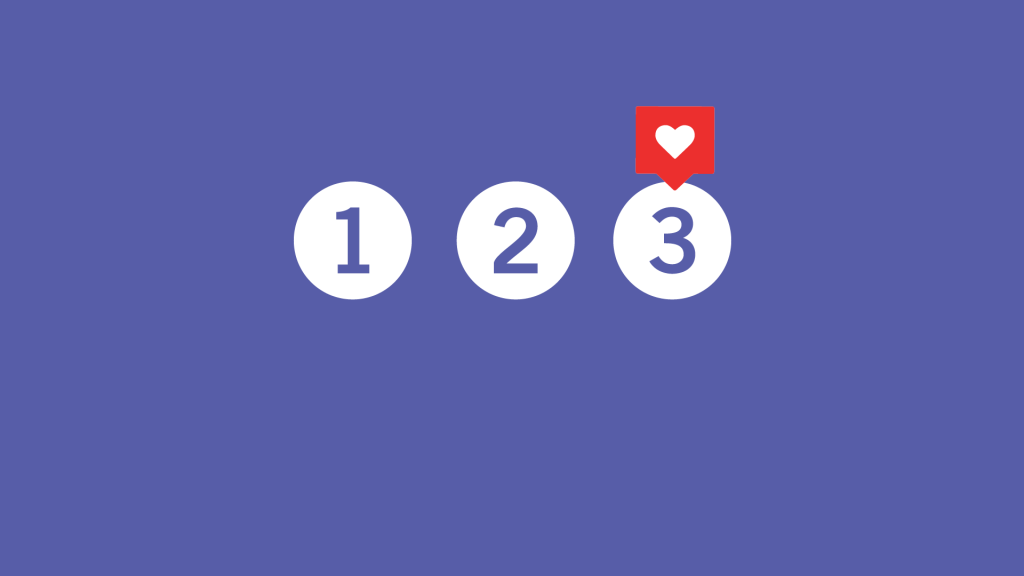
I know what you’re thinking: “Easy for an agency to say! What about my bank?!”
Ok, so you might not have 15 things to talk about in a single day, and right now, 260 posts a year just sounds outrageous. This is probably true, especially if you treat your social accounts like most do—by starting the day with a blank slate and a few vague ideas of what to post about.
Speaking of vague ideas, poor planning is the most common denominator in subpar social media management. Don’t get me wrong: Planning is tough. In the creative world, a blank canvas is the most intimidating thing we face … and a social media calendar feels like 260 blank canvases.
But wait—there is good news! You don’t have to (and you shouldn’t) start with a blank canvas. You actually have a third of your content already planned (and you probably didn’t even realize it.)
Now I have you asking the important questions— “Where?” and “How?” Let’s answer “How?” first:
We’ve adopted a three-column approach to planning. To follow this approach, simply create a planning document with three columns and give them these headings:
- The World
- The Bank
- The Day
Odd titles? Maybe, but they’ll make sense in a bit.
The World
The World has already dictated a ton of your content. This portion primarily addresses official holidays and other noteworthy days. It’s everything from Christmas to Veterans Day to International Sandwich Day. One of the biggest pitfalls is letting these days sneak up on you. We’ve all forgotten an obvious holiday, but it’s avoidable with our three-column system.
None of these World events move more than a few days year-to-year, so you already know when they’re going to happen. The first step is filling out this column. Start with the days your bank will be closed. Craft those messages in advance, build the posts, and save them. If you don’t have time to do the whole year now, set calendar alerts two or three weeks ahead to allow yourself time to build the posts.
Next, list all the other non-bank holidays and “national” days you want to commemorate. Not all of these events will resonate with your brand and its culture. We recommend paying close attention to the following:
- Community Banking Month
- National Savings Day
- National Retirement Security Week
- National Financial Awareness Day
- International Women’s Day
- Small Business Saturday
- National Computer Security Day
In addition to the more relevant holidays, there are several fun days, like Pi Day (March 14), named after the number used in circular equations (3.14). There’s Star Wars Day (May the Fourth Be With You) and a ton of other fun days that can help anchor your calendar with ready-made ideas.
Whether or not you can create all of the content to support these days, there’s a day for everyone. Go ahead and mark these on your calendar.
The Bank
The second pitfall we see is only using these noteworthy World days. It’s a tempting pitfall because it’s so easy—but all this approach accomplishes is adding another drop into the sea of sameness. Change your questioning from, “How can my bank participate?” to “What can my bank add to the conversation?”
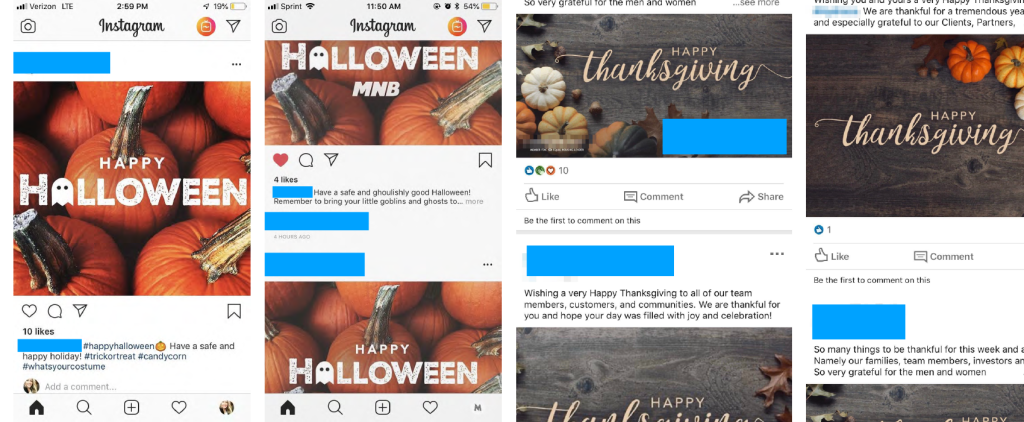
To fill out your calendar less blandly, we must look at the items your bank creates—specifically, those you know about in advance. We know a lot of things seem last-minute when it comes to bank marketing, but more often than not, this happens because you’re busy and planned events creep up on you.
I’m talking:
- Shred-a-Thon
- Habitat for Humanity build day
- Bank-sponsored 5K
- Fall festival fundraiser
- Community chili cook-off
You know about these events in advance, and it’s vital to maintaining your sanity that you pre-plan social media for them. Since most of you will be pulling double (or triple) duty in promoting and running these events, do yourself a favor and have some of the social media work done before each big day.
Be diligent about adding these to your schedule, or they’ll sneak up on you like President’s Day.
Go ahead and work out the copy and graphics to have these ready. Pre-promote these events in advance. And be sure to follow up afterwards, reporting such results as turnout numbers, funds raised, and total volunteer hours.
And, of course, post pictures from the day of the event—which brings us to our last column.
The Day
As you might’ve surmised, the other two columns are about freeing up time for reporting the news—your news—as it happens. All of your postings cannot be conceived, produced, written, designed, proofed, and reviewed by compliance in one day.
There are plenty of fun and/or interesting things that happen at your bank each day. But they’re easy to miss when you’re researching the difference between Veterans Day and Memorial Day for what seems like the 60th time to make sure Monday’s post is correct.
Preplanning posts around official holidays and bank-created events is the only way to free up the time necessary to find the interesting things in day-to-day life. But these day-to-day stories are the ones that set your bank apart, because they’re what actually make your bank different—the people, the relationships, and the level of service.
Maybe it’s Mr. Jones, who always visits the drive-thru with his loyal golden retriever, or the kids showing up from Mrs. Smith’s second-grade class to learn about money. Maybe it’s Darryl from IT who volunteers every weekend, or Tammy, who’s been bringing donuts on Fridays since she started at the bank in 2003.
A lot of people struggle to post these details because they seem mundane—but really, they only seem that way to you because they represent your daily experience. Just because you’ve seen Mr. Jones’ dog 100 times doesn’t mean your social followers have.
To plan well and free up the time you need to create these day-of stories, you’re going to need some tools.
The Where
After filling out your three planning columns, what do you do with all of this information? Whether you want to stick to planning the work or make the content in advance and automate the posting, you’ll need some tools.
If you’re going the pure planning route, I suggest Airtable. It’s a great platform with a ton of flexibility that lets you look at the same information in many views. You can convert your content list to a calendar view with a click of a button. For all you project managers, you can also use a Kanban view to push a project through stages, such as design, proofing, and compliance review. The best part: Airtable is free for the core functionality, and the free version should cover almost all your needs.
Airtable is especially handy for collaborating with people across multiple locations. You could use Excel, but emailing one file around gets cumbersome and dangerous, as it can change with each hand through which it passes.
When you’re ready to start scheduling posts, we recommend starting with HootSuite because it’s the gold standard for starting out in this activity and also offers a free plan (i.e., three accounts and 30 scheduled messages with one user, as of the publication of this column). This approach lets you get your feet wet without too much of a commitment. If you don’t like HootSuite, Buffer also has a free plan, and Sendible has affordable plans that include some more robust features we enjoy.
Or, if all of this is totally overwhelming, you can jump into a truly managed experience with Social Assurance. It’s a fantastic company that specializes in helping banks run their social media at many levels.
Plan, Plan, Plan
While the need to plan might not be a groundbreaking insight, we have seen the three-column categorization really help planners put their calendars into perspective. Not being overwhelmed or missing opportunities is all about breaking down the year into smaller bites.
Start with big holidays. Then overlay your bank’s event calendar. Once your social calendar is two-thirds full, you will find it much easier to identify and post the interesting day-to-day activities that set your bank apart.
Consumers don’t think about banking.
As bold as that statement might be, it probably doesn’t really rattle your cage. Now think about how you talk about your clients with your peers—within the bank.

“Earn up to half a basis point more on our demand deposit product by meeting four of our seven simple qualifying criteria.”
But consumers don’t think about banking. Bankers think about banking.
Now that doesn’t mean that consumers’ minds aren’t on financial topics. They just don’t think about it like you and I do. They’ve never studied the Truth in Lending Act and certainly don’t know the difference between an investment advisor and a fiduciary—or even that interest is cool because it compounds.
Consumers think about…
Making ends meet.
Can I afford a new house for when the baby comes?
Am I going to be able to retire?
How do I save more money?
Or even more simply:
How do I take care of my family?
Can I avoid being a financial screwup?
Most of us meet those questions with bank speak: “Earn 1.23% APY With a Flexible Savings Account.”
Or even worse, a robot impersonating a human: “I Can Bank While I Wait in Line at the Food Truck.”
Yes, those are real examples, and not just special cases. We see a lot of similar ads.
In the financial industry, we think about banking. In the real world, people just think about money.
For most Americans, their bank is just where their money is deposited. A vast majority (82 percent) of US workers have their paychecks direct deposited*—pretty impressive adoption seeing as how almost 7 percent of households don’t even have bank accounts. Their money goes into an account, they check the balance online, and they use a debit card to spend the money.
Other than a random fee, promotional email, or account hiccup, most Americans don’t think about their bank or banking at all. And there is no more brand loyalty associated with banks (the institutions most Americans trust with their entire net worth) than any other retail category. In fact, eight in 10 millennials would switch banks for better rewards.** Sure, millennials have lower brand loyalty than other generations, but not by much.
But they worry about money a lot. We’ve all heard the stats:
- 43 percent of people with student loans aren’t making payments on those loans.
- One-third of Americans haven’t saved a single cent for retirement.
- Two-thirds of Americans couldn’t pass a very simple financial literacy test.
One reason people don’t think about banking is because they don’t understand it. I have a brain, and I’m very invested in the health of my brain, but I don’t think about neuroscience too often, because I just don’t understand it.
Your clients don’t understand finances, but they do have to use them every day. That’s incredibly frustrating, and leads to an incredibly striking stat: more than half of Americans have cried about money.
Why?
Maybe it’s because I could rock the Pythagorean theorem by 9th grade but didn’t know how to use a check register until I was in my 20s. Was it the school’s fault? Maybe. My parents? They tried—trust me. Some of my friends’ parents never mentioned money, though—because they didn’t understand it either.
But there’s a difference between fault and responsibility.
Maybe it’s no one’s fault—and by that logic, everyone’s fault. But let’s not assign blame. Let’s talk about responsibility and, even more than that, opportunity.
Your bank can take responsibility for your clients’ financial fitness, and in return, you can reap the rewards of having more financially literate clients.
I don’t think bankers intentionally do a poor job of explaining banking to their clients.
I suspect it’s much more innocuous than that.
Our minds are on banking—so much—all day, we simply forget that the consumer doesn’t think about money in our terms.
Bankers, like everyone in business, think, “I know my customers because they’re like me.” But that’s just not true, because you are a banker and your clients aren’t bankers.
My boss will often compare it to hunting ducks. When you hunt ducks, you probably quack like a duck and put decoys out to look like a duck, but your role is not to be a duck. You may understand ducks very well, but the moment you become a duck, the very nature of the transaction changes.
You have to remember that you are not the client. The client is not you. You’re there to serve the client—and it’s better for everyone when you serve on the clients’ terms.
And your clients and prospective clients need to know how banking works. Or you at least have to translate banking enough so the client can understand his/her role. And if you can tell them, you will forever be the easy and approachable bank in their mind. And the earlier you start, the more your bank will benefit.
Imagine this scenario. You explain the basics of automatic savings products, the way compounding interest works in your IRA accounts, and the benefits of having a checking account with FDIC insurance to a recent high school graduate who is about to start a summer job before going off to college. If that student takes any of your teachings to heart, they’re going to graduate from college with a little money and a good idea of how to stretch their new big-boy salary a little further.
That client is likely going to meet someone, fall in love, get a promotion, get married, buy a house, have some kids, buy a bigger house, open a college savings account, take out a HELOC, double down on retirement, open a trust account, and the list goes on.
Where do you think they’re going to open those accounts? At the bank that taught them how money works—the bank that related to them on their terms.
That is, if they know how banking and money work. Otherwise, they’ll open a checking account, leave a few hundred dollars in it each month, live paycheck to paycheck, and never really learn how to grow their wealth.
Most bank products were created to meet a client’s needs. But bankers accidentally explain those products with bankerly jargon. So opening their eyes to the possibilities offered by a wider range of financial products brings your clients value—if you can connect on the clients’ terms. It empowers your client while increasing your bank’s share of wallet.
(Side note: FDIC is a real big “duh” for us bankers, but most bank clients have no idea what it means—no matter how many tiny logos we put on ads or obscure plaques are displayed in our lobbies. Tide has been reminding Americans for more than half a decade that “Tide cleans clothes.” Duh, it’s clothing detergent. But they’re beating their competition. Be the only bank in America that truly reminds clients that their money is insured. Who cares if your competitors think it’s silly?)
Community banks are here to help the community. Let’s help them—first by helping them understand.
So you’re asking, “But, JB, it’s so complex—where do we even start?”
Well, the foremost experts in banking in your community are at your bank. Start with your clients. They’ll be so happy they’ll tell their friends. So then explain banking to your clients’ friends. After that, go to the young families in your community (they’re probably applying for homes with your mortgage department). Visit the schools (there are plenty of financial literacy packages to sponsor and/or use outright). Write about it on your website—nothing too fancy.
Tell them how banking works. Help them protect their finances and plan to grow their wealth. They’ll remember you for it.
*Nacha (The Electronic Payments Association)
**https://thefinancialbrand.com/64222/millennial-switching-banking-marketing-checking-accounts/
Just because we’re not hearing about big data every day doesn’t mean it was a fad. Its importance has faded exactly as much as that of social media or millennials—which is to say, not at all.
The only problem is that a lot of bank marketers still feel too small to take on big data—because big data is a hell of an undertaking.
But not all data projects have to be big. You can start small.

We’re going to give you four small bites you can take out of your bank’s big data that will yield obvious results. They’re actionable items anyone can handle without having to bring an extra data person on staff or enlist a third-party vendor.
And while each piece of data is important on its own, when compared with one another, these data points can feel like cheat codes.
Even better, these data points can easily help you spend your marketing budget on much more targeted efforts.
If you already have a handle on these data points, great. You’re a lot further along than a lot of your peers. And if you don’t, that’s fine, too. But in that case, it’s time to get started—and we’re going to help.

1. How many clients do you actually have?
If you don’t know, you’re not alone. It’s a statistic so obvious that it’s often overlooked. But knowing the number of total clients your bank serves fills in a huge piece of the puzzle for your bank, your budget, and your marketing strategy.
If you’re ever in a room where this question is asked, you have to be the one to answer it.
Conventional wisdom says more is more when it comes to attracting new clients. New accounts mean new deposits, new loans, and so on—and that’s true. But it’s not the whole truth. Deepening relationships with existing clients by suggesting additional (and helpful) bank products, providing financial education, and encouraging engagement with your bank can cement customer loyalty and increase wallet share.
Tackling data-driven marketing is like eating an elephant. It seems overwhelming at the outset, but the only way to do it is one bite at a time. That’s why most banks simply don’t make the effort. Knowing your total number of clients amounts to taking the first bite.
- Data Point: Number of existing clients
- Action Item: This is the beginning of your MCIF (Marketing Customer Information File). It’s your master file that tells you everything you know about every customer you have. You don’t even need a fancy system to track this, just an Excel document. And as simple as it seems, this data is key for comparison to everything else.
- Next Steps: You have a list of all your clients. Now begin putting them into buckets. Sort them by data point—for example, customer type (e.g., business, personal, wealth, etc.), product type, and age group.

2. What accounts can customers open with your bank?
Can you list each account category and product your bank offers, complete with a brief description? Sure, you have access to the information, but do you know the products off the top of your head?
You offer personal checking, but how many different types of accounts? And I’m not just talking about the ones you’re currently promoting. Can you name all the checking accounts that are holdovers from mergers? What about each offering in your treasury management suite?
This can be a lot of information to grasp. But failing to grasp it is a big mistake we see banks make. If you lack a fundamental understanding of what products your clients have with your bank, it will be impossible to market to them in any effective way. If you take a more analytical approach to this data point, you can find gaps in the products and services you offer. Maybe something is missing in your product line that your clients would like to see, or perhaps it’s time to retire that holiday savings account that no one uses.
Additionally, banks that have gone through mergers can have an overwhelming number of account types. And chances are, if you’re reading this, you’ve gone through a merger. (According to the FDIC, 91% of merger participants are community banks, and community banks make up 92% of all institutions.) This means that most banks are offering duplicate accounts, or similar accounts with different levels of profitability.
Community banks are often unwilling to upset the apple cart. You have an opportunity here. Look at those accounts to find which ones are more profitable.
- Data Point: List of current products and services
- Action Item: You probably know most of your products, but dig deep and find all of them—even the leftover legacy accounts from the acquisition your bank went through in 1997. Put them down on a spreadsheet, and group them by like type or department.
- Next Steps: Analyze each account and grouping. Compare offerings to see where you have redundancies, opportunities for increased profit, or products that are losing the bank money. Analysis is a big concept that’s way simpler in practice. Maybe you have an account type that’s costing the bank money or is only used by five clients.

3. How many clients are coming into the branch?
If you can understand how people are originating business with your bank (i.e., how many clients are opening accounts in branch versus online or on mobile?), you can focus on optimizing the experience for each of your clients.
This also helps you set realistic goals for your campaigns and better track your results. If you want to increase online account openings, it’s good to know how many people are opening accounts online currently.
Knowing this will also help you understand whether you’re simply spending marketing dollars to cannibalize the clients you were already getting. If your online account openings go up, but your in-branch numbers drop by a comparable amount, you may just be moving clients instead of attracting new ones.
Listen to your clients, and speak to them in the marketing channels where they are more attuned to hear from you. Otherwise, you might be tossing your marketing dollars into the void.
- Data Point: Number of clients who originate business in branch, online, or on mobile
- Action Item: Track movement of your clients across your platforms over time.
- Next Step: Begin to compare your data month by month with your starting point.
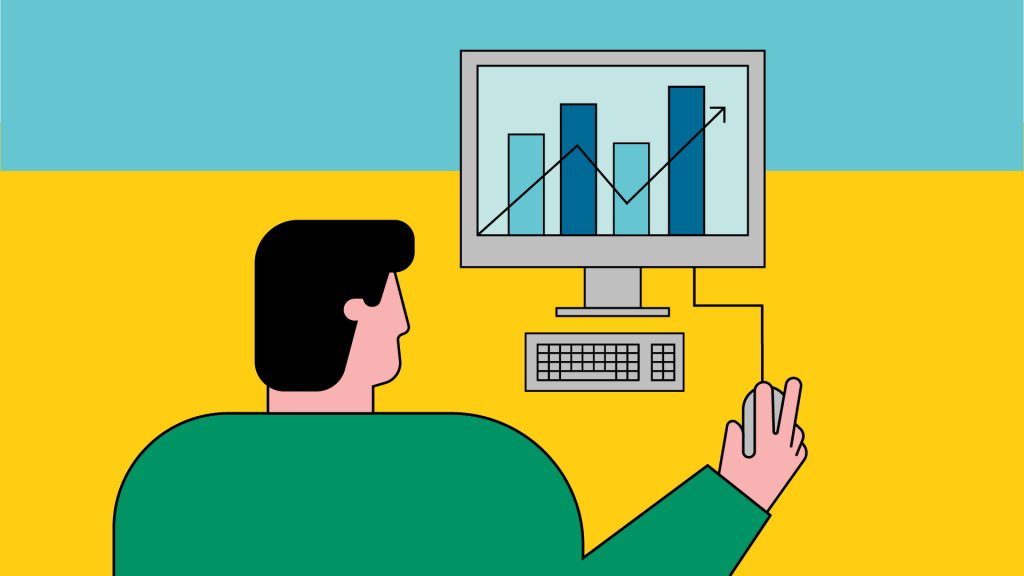
4. How are your individual web pages performing?
Take a deep dive into your website’s analytics to follow the different paths that your clients are taking. The first thing you’ll probably notice is that the overwhelming majority of your traffic is logging into your online banking portal.
Where are these clients entering? Where are they exiting? What are they trying to gain from your site? If you see an upward trend of visitors to a product page, be sure that page clearly explains the product’s benefits (as opposed to providing nothing more than dry bank jargon with rates and fees).
How users navigate your website can tell you a lot about what you’re doing well and what you’re not. Understanding this navigation creates an opportunity to fine-tune your highest performing pages—and to find ways to keep users engaged on the pages they’re currently leaving.
- Data Point: Number of page visits for each page on your site.
- Action Item: Categorize each of your pages by performance. What are your 10 lowest performing pages, and what are your 10 highest?
- Next Steps: Compare the low- and high-performing pages. Are the low-performing pages doing poorly for a reason? Do your high-performing pages have something in common? Of course, every site has to have a least-visited page, and if your safe deposit box page is the one getting the fewest visits, you probably don’t have to do anything. But if your flagship checking account page is low, you need to assess SEO, click path, and layout.
Four ways to combine the data you’ve gathered for quick wins.
As obvious as these data points may seem, now that you have them collected (and hopefully top of mind), you can combine them to return results that are far greater than the sum of their parts.
1. Heavy Is the Relationship That Holds the Checking Account.
Let’s start simply. How many customers do you have, and how many checking account customers do you have?
A Bankrate survey shows the average American holds onto a checking account for almost 16 years. Think of all the other bank products a client will need over the course of 16 years. The bank that holds a client’s checking account is likely to be top of mind when that client seeks new services.
You should have all of your clients’ mailing and email addresses. So send out a special promotion to your bank’s clients who don’t already have an active checking account.
2. The Savings Gap Is Larger than You Think.
Similarly, you can compare your clients who have checking accounts with those who have savings accounts. Then advertise a special promotion to those who don’t have a checking account with your bank. You may even be able to set those clients up with automatic monthly transfers to the savings accounts.
3. Who’s Ready for a HELOC?
A HELOC has one basic universal requirement—a home with a decent amount of equity. Do you know who has a list of most of your customers who meet that requirement and are already acquainted with your bank? Your mortgage department.
4. Use Traffic to Generate Online Account Openings.
How many of your top 15 web pages have online-account-opening prompts? If your answer is “fewer than 15,” you have an opportunity. Your top-performing pages, especially if they advertise an account that can be opened online, must prompt visitors to open a new account.
Better Data Should Equal Better Service
You have an opportunity to make the banking experience better for your clients. The more you know about them, the more you can provide them with the services they need to grow and protect their money. And the great thing about banking is that client success often directly correlates with institutional success.
The good news is that your bank probably already has lots of data on each client. You just have to figure out how you want to use it.
Don’t feel overwhelmed by the prospect of starting all at once. Work your way through this list, and then you’ll begin to understand how to use the data you have to suit your bank’s specific needs.
Before you know it, your easy wins will turn to big wins, and your clients will be better for it.
BONUS: What’s the abandonment rate of your online application?
Now that you’ve got some easy wins under your belt, here’s a bonus data point that’s a little trickier, but still very doable for most bank marketers.
It’s time to find out how many prospects drop out during the middle of an online application—and to figure out why they’re dropping out.
Some of you may not have an online application to drop out of. That doesn’t mean you get to skip this step. EVERY bank should have an online application. (If you aren’t convinced, read Josh Mabus’ article on digital adoption, Dive Into the Digital Deep End. If you don’t have online and mobile account opening, your homework is to make that happen.)
By the time a potential client begins filling out an online application, you’ve already got him or her—hook, line, and sinker. If the prospect drops out during the application process, it’s because you’re doing something wrong.
Your goal should be to make the path to purchase as short and seamless as possible. In spite of this, opening an account online can often take more than 15 minutes. Because today’s digital-first consumer won’t settle for anything less than simple and streamlined, abandonment rates for online applications are staggeringly high—upwards of 40%. And 34% of consumers reported they would have gone elsewhere if they’d known in advance how hard/long the online account opening process would be, according to a study from Deloitte.
However, if you know where in the process these prospects are dropping out, you’ll have a better understanding of why—and can adjust your application accordingly to drive more conversions.
- Data Point: Online application abandonment rate.
- Action Item: Look not only at how often a client abandons one of your online applications, but at where in the process such clients are dropping out.
- Next Step: Work with your core or third-party provider to streamline your application process or update some of the steps based on your abandonment data.
Your client visits your website looking for a mortgage, but has no idea which product fits.
You help them out with a decisioning tool.
A client needs a new checking account and your bank was the first hit on Google (congrats!). Does the Super Saver account fit better? Or the Free Checking plus?

Again, a decisioning tool can help direct this person to the right product.
Decisioning tools are great, helpful components of bank websites. Bank marketers, product developers, and other team members spend incredible amounts of time creating proper flow, question syntax, and scoring to ensure the right outcomes are reached.
There are dozens of third-party consultants who specialize in helping banks set up decisioning tools.
But there’s a problem—a big one—when we focus so much on the decisioning tool as a component of a website.
I see bankers spend an unbalanced amount of time deciphering customer flow through a component of the website without spending that same time and effort on the website itself.
You see, your website is a decisioning tool.
You might spend weeks tweaking your mortgage tool to help someone pick the right product, but how much time did you spend ensuring a potential client reached the mortgage page quickly and efficiently?
Decisioning tools are great. We build them. We even use them. They help your customers find the right loan or choose the perfect checking account for their life stage—but we forget that websites, by their very nature, are a decisioning tool. A decisioning tool shouldn’t just be a plug-in on your website. Your website is a decisioning tool. And while a decisioning tool is usually just an option, your website is the path. It’s encompassing of every option your bank offers.
Where your clients click, when they scroll, when they go back to previous pages—all these decisions are data points that reveal their thinking. Your bank’s entire website is (or should be) helping someone make a decision—from the layout of the pages to the language used to describe products, to the design of the sitemap.
Website Vs. Interactive Brochure
The most common sin we see on bank websites is they’re simply an interactive brochure for the bank. I would wager that more time is spent scrutinizing where the online banking login portal is placed (because Lord knows if you move it 10 pixels to the left, you’ll be inundated with complaints) while the other page flow was just picked up from the last site layout.
Using a website as an interactive brochure is a missed opportunity because the great thing about a website is that it can be nearly anything. It’s a platform from which we can tell potential clients anything, in any way. But most every bank chooses to use a slider featuring the exact same images and text as the brochure or poster next to teller row. Products are listed in typical banker parlance instead of considering how clients think about their banking needs.
We forget that clients don’t seek out bank products based on the product’s name or category. We ignore that clients don’t think about banking products like bankers do.
Clients think in terms of the problems they’re trying to resolve. Your clients don’t want a mortgage, they want a house, and they want help figuring out how to afford one. Your clients don’t know the terms IRA, 401(k), or superannuation (I swear to you this was a top-level navigation item on a website I recently visited). They do, however, want to retire one day, and are terrified of how behind they are in preparing for that eventuality.
Treasury management is the most beneficial and underutilized area of business banking for this very reason. Most small businesses could use cash flow help, but almost none of them are seeking “treasury management” help.
Your website can be anything. Don’t settle for the limitations of a clickable brochure. Create an experience that actually helps your clients.
Click Path Matters
When planning out a website, most bank marketers think about the website in a sitemap—which is technically how websites are organized. But, in looking at a sitemap, it’s key to think about a click path. A click path is the journey a client takes to find the information he/she is seeking.
How does a client get to the information they want?
Examining possible paths a client might take is a valuable opportunity to introduce products while providing clients more value. Sure, fewer clicks between the home page and the information they need is a good policy, but never forget you have the ability to create a journey for your client.
Think about a grocery store. You know where the milk is, and it’s easy to get there, but it’s not the first thing you see, and the store’s management has laid out a series of items for you to see on your way. Some of those items are “have you thought about getting one of these” items and don’t necessarily go with milk while others are a no-brainer, “while you’re getting milk you should probably grab some of these” items, like cereal, or Oreos.
The real missed opportunity is when we forget to use click path data to inform future decisions and future journeys.
For instance, when a potential client visits your site for the first time, we don’t know anything about them, so we should probably just show them the more popular products and enticing offers. Now, if that potential client selects the business checking page, we can safely assume this person has a business or manages a business’s finances and then serve them content about some of our related bank products, like cash flow assistance or sweeps accounts.
The paths we create for clients to follow are key to the success of our website, and thanks to the speed with which web technology has developed, it’s easier than ever to monitor traffic and serve clients more meaningful content.
Inverse Content Triangles
Now that we’re creating a journey for a client, we must remember that some people will be convinced quickly while others want to do extensive research. If someone is ready to make a decision immediately, we need to give them the option. At the same time, we need to answer all of the questions a more curious prospect may have.
As the audience dives deeper into your site, it shrinks in size. This shrinking audience seeks broader and more specific information as they dig.
We visualize this with the inverse triangles of content. The largest number of people will visit your home page. A lesser amount of people wants deeper information. Too many marketers short-circuit this system by putting everything (and the kitchen sink) at the top of a product’s landing page. Once you understand that an audience culls itself as it seeks more specific information, you can organize your information in a more valuable flow.
Your first layer of information is striking, engaging, and relatively shallow. You must quickly engage your visitors by confirming they’ve reached the right place. Some of your audience will sign up right there—at the top level. A smaller amount needs more information. As they drill down, you can offer more information. Your second level explains the variety of checking products. Your third level can give detail on the offerings of each.
How can you create a system that wins in both scenarios (and the spectrum in between)? This has a lot to do with the previous section—click path—as well as content structuring and page layout.
By leading with the most compelling and concise information, we can not only cater to the larger number of people reading but also attract more readers to the page. Leading with a more compelling benefit compels the reader to continue engaging with the product. Those who need the most information will expend the extra effort to continue clicking, but only if it is apparent that the information expands as they click.
Always Give a Way Out
No matter how valuable of a journey you create on your bank’s website, someone will want to navigate at their own pace. You must provide visitors with a way to navigate through your bank’s product pages, content, and portals at their own pace—even if you’ve created a superior decisioning experience. They also need to be able to move laterally through your designed click path. Maybe they want to see something again on a previous page. Maybe they want to skip ahead to make sure this is the right path for them.
We call this “healthy redundancy”—having many entrances and exits from each page, especially with a mind toward related content. No matter how good your designed journey is, be sure to give your clients freedom to create their own journey, too.
Get Started (Challenge)
Before you can begin the process of designing an intentional customer journey through your website, you need to account for what your website experience looks like now. Try this:
Find a mind-mapping software you like (we like the free account at Lucid Charts and the paid account at Miro) or grab a really big whiteboard with lots of colored markers.
Map your website out by hierarchy of information—like a family tree. Your home page should be in a box at the top of the page, on a line by itself. From there you may diverge into personal or business pages. It varies from site to site. Most banks have sitemaps that are considerably wider than they are tall, but the goal is for your sitemap to look a little more like a Christmas tree. And within that Christmas tree, you want to have pages that work as a shortcut from the top to the bottom or from the far left to the far right.
- Draw out your current sitemap. Does it offer a narrative path, or is it simply a collection of loosely related pages?
- Can you think of ways to begin grouping pages and products that will make your website easier for a consumer to navigate?
- Instead of grouping your products by department or product types, draw a hypothetical sitemap that takes clients through the page according to their life stage.
Each click, scroll, and pause is a decision—a decision to stay, leave, or go deeper into your website. You’ll never help a client pick the right mortgage if you can’t get them to the mortgage page. Your website IS a decisioning tool. Make sure you build it so clients decide to stay.
A Rebrand Strategy That Won’t Leave You Reeling
No time to read? Listen to an audio version of this blog below.
There are two kinds of banks: those who get to rebrand and those who don’t. For those who get to initiate a new brand, it’s one of the most exhilarating (and scary) projects you’ll undertake. The entire future of an institution is your responsibility and there are only two options as to how it will turn out: great or terrible. There is no middle ground.
If things go well, you might be looking at a promotion (or another bank looking to snatch you up to help them rebrand). If things go poorly? Well. You might be getting the boot.
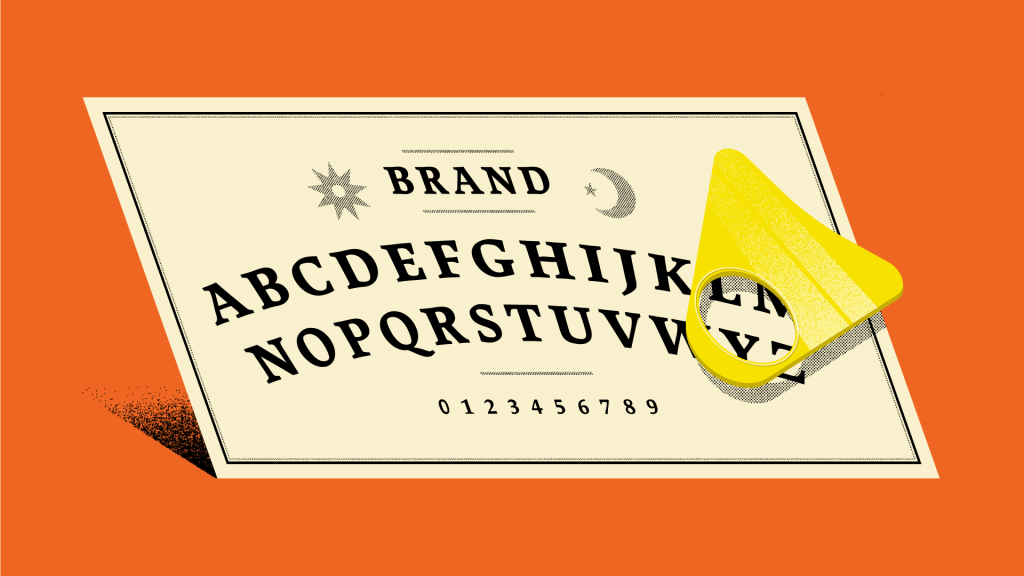
There’s a bigger problem, though: It’s almost impossible to immediately determine which way it will go.
Rebranding has an almost supernatural reputation. We talk about capturing the essence of an organization or the spirit of the brand. It’s intimidating. It sounds like you need a medium or a spirit guide, or at least, an Ouija board.
For most, any rebrand is their first.
We want to help you through all the prognostication and soul searching, but we’ll skip the Ouija board and hopefully demystify the process.
That doesn’t mean we can remove the fear. The best analogy I can give for your first rebrand is a bit like skydiving. If you go on a legit excursion, the instructors will spend far more time on the ground training you than actually plummeting from the sky. All of that instruction doesn’t keep you from being scared when you poke your head through the door and see 13,000 feet of nothing separating you from the ground. Having a qualified expert strapped to your back doesn’t keep your heart from racing. But, at some point, you have to jump. When you have to take that leap, we want to make rebranding a little less nerve-wracking.
START WITH THE WHY
Everyone, including wet-behind-the-ears interns, quotes from the gospel of Simon Sinek. Common knowledge doesn’t make it bad knowledge. And that’s the case with Sinek’s number one commandment: Start with the why. So let’s start there. Why rebrand?
The two most common and pragmatic reasons banks rebrand are geographic expansion and mergers.1
The First Bank of Smith County doesn’t make much sense when you expand into Carrol County.
It gets a bit more complex with mergers and acquisitions. Sometimes banks find that their name conflicts in a newly expanded footprint, or you run into the same geographic issues mentioned above. Other times, banks take advantage of the upheaval to create a stronger name or identity.
If this is your “why,” it’s tempting to react with a simple modification. We are now the First Bank of Smith and Carrol Counties. That’s not getting anyone into the branding hall of fame.
Perhaps everyone finally noticed (and agreed) that your colors are outdated or your logo is just ugly. Then your “why” might be aesthetically based. In this case, the easy part is agreeing to change. The hard part is when someone wants to pay homage to the old brand—worried that the audience won’t recognize you. This is a valid fear, one that should be explored, but too much energy can easily be expended on this effort. Too many banks wind up compromising. This is when First Bank of Smith County becomes FBSC.
Let me be clear. This is a bad idea. Please do not be tempted to go into the middle ground of abbreviations. These attempts to hold on to the past (that your clients probably don’t even care about) normally leave you with no brand name at all. Sure, you can cite UPS, GEICO, or AT&T as examples of successfully abbreviated companies, but I doubt your bank wants to spend the BILLIONS of dollars each of those brands spent over years to attain their status. These examples only prove that one can be successful with an abbreviated name. It doesn’t mean you should.
When you rebrand, you can be anything. In the earlier example, the initials FBSC don’t communicate anything. There are many clever ways to uphold existing brand equity and pay homage without reducing yourself to a set of letters that can’t recall any connection to their roots. Want to test it? Without internet search, can you immediately recall what UPS, GEICO, and AT&T abbreviate. Even if you got them right, do you associate their expanded names with what makes these companies successful?
Often your reasons for rebranding are most important to you and your colleagues and often less relevant to your audience and clients. Your reason for rebranding should help inform your rebrand strategy, but it should not necessarily be your rebranding strategy.
Your true “why” has to be deeper.
No matter the predicating factors, you should be rebranding to make a stronger identity. Brand is the foundation of all marketing efforts that will follow. Brand is the fulcrum that helps you with all the heavy lifting to come. If your name and logo are unique and memorable, earning name ID and top-of-mind awareness will be easier and cheaper. A strong brand message can reduce your advertising cost because word of mouth will be easier to create.
Brand strength is your goal. It’s your why. Now you’re asking “how!?” We’ll get there, but we have to ask “who?” next.
WHO IS THE BRAND FOR?
Everything in branding comes back to audience. The better you understand your Who (your audience) the stronger and more successful your rebrand will be. Think about who your rebrand is for. The good news is that most marketers overcomplicate audience. We’re going to help you simplify it.
Before you dig deeper, you need to pick between two audiences. Are you rebranding for your current clients or potential clients? It’s never an equal split between both. And, spoiler alert, it should lean toward potential clients.
Can you rebrand for new clients without alienating your constituents? Yes.
And the answer is so easy we’re not going to expound very much: Just communicate with them. Unless you drastically changed your core offerings, how you do business, or moved a headquarters, you’re probably not going to lose clients—if you communicate the changes with them.
Now that we know there are two groups, let’s add a bit more detail to help guide your efforts.
- Ugly/Outdated Brand — Gone are the days of one community bank competing with another. Even if you’re one of two or three banks in town, you’re competing with national sentiment. In other words, if your brand doesn’t look like it could compete with a national brand, it could be diminished in your audience’s perception. Potential clients will judge your ability to fulfill a mortgage by the intelligence and sophistication of your marketing, and that is based on your brand.2
- Forgettable/Confusing Brand — This is similar to the example above. More than two-thirds of banks share a similar name. This similarity comes from shared mundane terms such as Citizens, Farmers, First, National, etc. There’s a lot of competition for your clients’ headspace; if they don’t remember your brand, you’re not going to convert them.
- Misleading/Alienating Brand — Do you ever wonder why certain clients only have one product with your bank? It could be because they think of your shop as a business bank/ag bank/retail bank, instead of a full-service financial institution. You don’t want to spend money perpetuating that to a broader audience. Perhaps your name is too rural, urban, traditional, modern, etc., so potential clients assume it is not for them. It’s hard to be surprised when Merchants & Farmers is not raking in the retail DDAs when no one refers to themselves as merchants and you already have all the farmers’ business.
“Why” and “who” combine to make up the foundation of a great brand, but we have a few other questions to consider.
What . . . ?
What are we even doing? What’s on the table? What about the logo? What about the name, tag-line, and market position?
It might sound ridiculous, but I can speak from experience: I’ve seen rebrands fail due to the fact that no one agreed on which component could (or should) change.
When there’s a sacred cow—i.e., “the logo is off-limits, but change everything else”—it’s usually due to internal politics. Other times, it’s lack of communication.
Go back to the why and be brave enough to make a firm decision. Let that inform the rest of the process. When someone is stuck on brand equity of a generic name or says, “we can’t touch the logo,” it might be time to hang up the process. A 60 percent rebrand doesn’t yield 60 percent of the results. In fact, it usually has negative returns.
WHEN ARE WE READY TO ROCK AND ROLL?
After everyone gets on board with the process, a sort of euphoria takes over and “brand-launch fever” starts to spread. The symptoms are shortened timelines, heightened expectations, and general lack of awareness.
One of the worst things you can do is shortchange your rebrand timeline.
Start with your launch date and work backwards. Make certain to give enough time for each aspect of the process. Work with your rebrand firm to understand their timeline. Build in time for reviews (remember, your board is going to want to sign off on this). Look at major events on the calendar. Don’t launch your brand in the middle of other large news events such as major elections, local events, or other distractions.
Also, don’t overlook internal buy-in. Schedule an internal launch well in advance of your external unveil. If your employees aren’t on board, it’ll be that much harder to establish your brand in the communities you serve.
All of these meetings and events can be difficult to schedule. Weeks become months. And the best of timelines go bust in a hurry.
And we haven’t even mentioned the other items tied to this: new website, signage, etc. There are many moving parts and your best friends will be a cautious outlook and a comprehensive calendar.
WHERE DOES MY REBRAND LIVE?
There are a lot of existential, highfalutin, and heady elements to doing a rebrand.
Who is my bank? What’s our authentic self? If my bank were a dog, would it be Doberman, a golden retriever, or an Airedale? Conceptual is good, but being grounded in reality will help guide your rebrand from little baby idea to grown-ass rebrand for the real world. Hold your agency and your internal constituents accountable.
The big questions to help ground your rebrand are around where it will live. Think through how your current clients and potential clients will experience the new brand. Are you going to do a big rollout event and announce it? Are you buying media to do a campaign around the rebrand? If so, what type of media do you typically buy and is it appropriate for a rebrand announcement?
Probably the biggest “where’s it going to live” question is about how the new brand will be represented in branches. Are you going to redesign branches? New signage? New paint? These details will help inform your rebrand strategy and make it most effective for the medium where you’ll primarily communicate it. They will also affect your timeline, so proceed with caution.
A REBRAND REALLY IS FIGHT OR FLIGHT
Rebrands are the coolest, hardest, most dynamic, rewarding challenges a marketing team can undertake. Even the smoothest rebrand will push you and your team to articulate your authentic self, simplify complex ideas, and challenge long-held assumptions about your institution. It’s a big, big undertaking to say the least.
It really can feel like launching yourself from a perfectly safe airplane at 13,000 feet. But the reality of rebranding, like the reality of skydiving, is once you’re in a position to do it, there’s really no turning back. You’re prepared. Now jump and enjoy the excitement.
1Is this true? Probably. We did a quick vote around the Mabus office and most people agreed with me, which they don’t normally do.
2Bank embarrassment most often manifests when clients are out to dinner and split the check. Everyone throws their credit cards on the table, and your poor, loyal client has to defend this ridiculously designed card that looks like it was created with MS Paint in the early ’90s.
Introducing the Bank Marketing Blogcast
You’re busy with work. We’re busy helping banks like yours (and writing insights about bank marketing).
We want to make your life easier. So we made the Bank Marketing Blogcast.
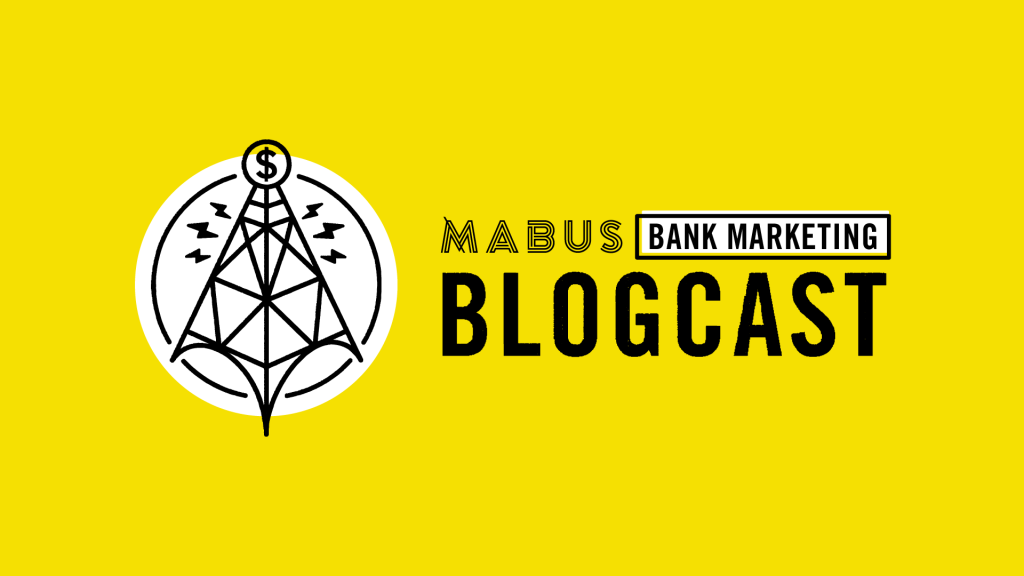
Now, on key blogs, we will offer an audio version of the words you love to read. Think audiobook but shorter (and more valuable for your bank).
Morning commute? Stream bank marketing knowledge straight from your car’s speakers.
Yard work? Crank up the volume on deposit tips.
Gym time? Enhance your body and your mind with career-boosting knowledge.
Our team of strategists and copywriters works hard to put out new insights and tactical tips on our website. Those same words will now be read aloud by the author and delivered straight to the device of your choice.
But wait, there’s more.
We’re also going to throw in some bonus conversations about our insights and tactics so you get to hear from more voices in Mabus Agency, not just the writers. Our designers, media strategists, developers, project managers, production team, and relationship managers have a lot of insight into bank marketing as well.
To make sure each episode is automatically delivered to your device, subscribe to the podcast feed. You’ll get new episodes any time they come out.
Want a quick test? Click the audio link on this page to see what we’re talking about.
No time to read? Listen to an audio version of this blog below. Once you’ve finished, check out the bonus discussion here.
10 Questions to Ask Before You Start the Search
Marketing a bank is harder than ever. New techniques and technologies abound. The never-ending cycles of approvals to adopt change are extended as IT and compliance departments balance advancement against risk. On top of that, most banks are actually performing pretty well—which sounds great…until you’re challenged to do better next year.
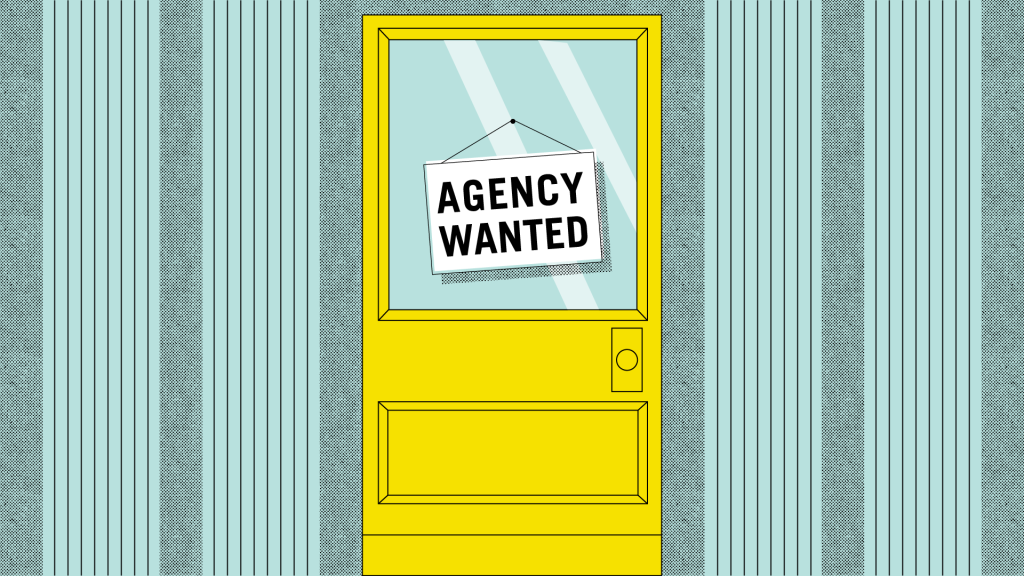
Beyond that, there’s a statistic that looms large. Five years ago, there were 5,818 banks in the U.S. At the end of 2018, there were only 4,687. That’s a 20 percent shrink. And it’s not like the competition went away. Before, you were battling against peers. Now that many banks have consolidated or been scooped up by megabanks, you’re battling giants.
As banks realize the need to grow in marketing sophistication, many are reaching out to agencies for the first time. I want to help you find one—and it doesn’t even have to be mine.
Now, let’s address the elephant in the room: “But you own an ad agency!” I sure do. But I’ve learned a big lesson over the years in this business: good relationships are worth their weight in gold. I’ve learned a few other things in that time, and I want to share some of them with you. There are no “truth bombs” here. Most of it is common sense. These are questions you should ask yourself before starting the agency search, or at least should consider before making the final selection. You’ll not only want to ask yourself, but also ask the agency(ies) that will do your work.
I’ll start with a bonus “thing.” Forget the stereotypes you’ve heard about agencies. Creatives are lazy…Agencies will talk down to you…It’s all like Mad Men. (I’ve had several mentors confirm the realism of that show, but those days have passed.) Some of these stereotypes are true of some agencies, but they are not the norm, and they are certainly not the standard. Many banks enter the agency search trying to find the “least bad” agency and are surprised when they still wind up with a bad agency. Look for the best, and accept nothing less.
Ok. One more bonus thing and then we’ll start. It’s really not about hiring the best agency, but the best fit. It would be a tragedy to hire an agency with terrible creative talents, but it’s worse (by many orders of magnitude) to hire an agency that’s a bad fit. Only consider agencies with creative/technical products that resonate with you, then hire the one you like best. Work with a group you like working with, and the work will be much, much easier and much, much better.
This is why you can trust my advice as an agency owner. Even if I spent the rest of this article trying to subliminally convince you that we’re the best bank marketing firm out there (even though we are), I couldn’t determine if we are a fit. And I’m much more concerned with fit. You should be, too. Trust me.
So how do you find the best fit for your bank?
Ask yourself these questions:
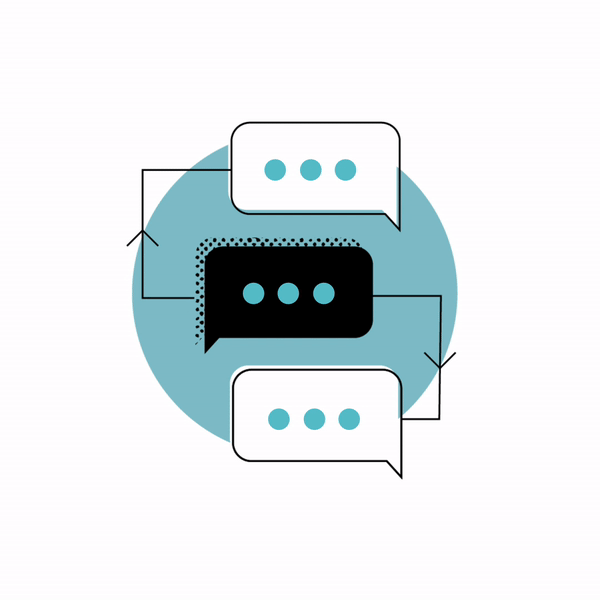
1. Do you want to delegate or collaborate?
There are two general categories for agency relationships. In one, a bank seeks an agency to which they can hand over all work, responsibility, and results. In the other, a bank seeks an agency with whom they can work together to determine the best approach on all work and divide responsibilities for the best results.
One of these works and one doesn’t.
If you want to hire an agency that just does the work for you, I can bet on your disappointment and I’ll win nine out of ten times. An agency is not a rescue, but it is an aid.
Collaboration doesn’t mean equal effort; it just means you’re present. It means you’re working with the agency. You have to be the lifeline into your bank, providing insights that outsiders can’t intuit on their own. Some of these are emotional. Some of these are technical (“we’re about to open a new branch, and we can give you two extra weeks to work on creative by letting you know early”).
A death knell of a bad relationship is when I want to say to a client: “I can’t care more about the success of your business than you do.” If you hire an agency, it’s probably because you need to delegate. But delegation combined with collaboration is much more successful than delegation without any interest in the process. If you have no interest in marketing, it’s going to be hard for the agency to sustain excitement just over the amount of money they’re billing you.
Keep in mind that as the client, you are the boss. Are you ready to lead the marketing efforts or are you looking for a swift handoff?
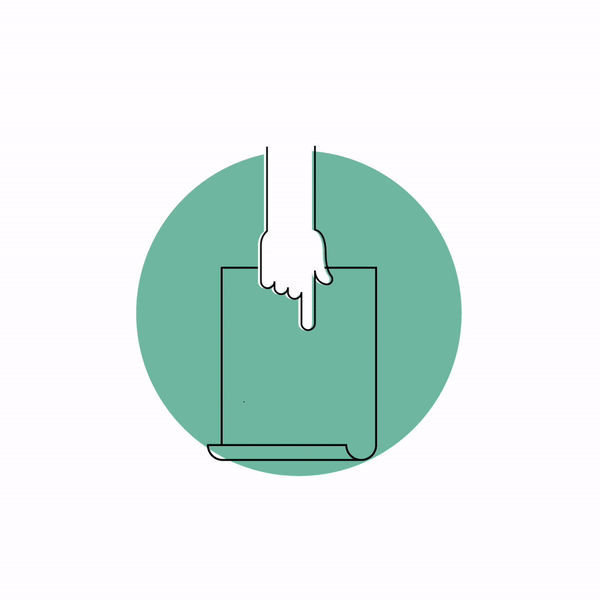
2. Can you clearly communicate your needs?
It might seem obvious, but if I have to say it, you must assume I’ve faced it. Before beginning your search for an agency, you must begin with some internal needs assessment. Per the first item, you have to be more specific than wanting “marketing help.”
Can you articulate (specifically) what you want your agency to do? Perhaps it is general strategic help. Or maybe it’s more focused:
- You need to update your
website. - You need to catch up on
digital media. - You need a new brand.
Whatever your needs, you need to be able to define them internally before reaching out. A large portion of a new agency relationship is building rapport, calibrating vocabulary (making sure you understand one another’s technical jargon) and getting on the same page. It’s not just that you need to be able to communicate your needs to your agency—you need to understand them yourself.
It’s not just about preparation. It’s about clarity and direction. Any new agency will have to onboard to understand the strategy, personality, etc. of your organization. You’ll waste valuable time and money if your agency is charging to not only figure out how to do the work but also what work to do.
Internal clarity is also important. Do your key stakeholders understand why you need an agency and what you need from that agency? Your agency will have trouble nailing down what they need to do if they’re getting conflicting messages from the marketing director, CEO and executive vice president of retail. And you will grow to resent the agency for not understanding.
If you truly don’t know where to start, you might want to engage a company with an “opportunity audit.” Create this as a separate assignment in which you’re asking an agency (or consultancy) to see where you can find the most success with your advertising dollars. This can be guidance around product promotion, advertising technique, audience identification or a combination of these (plus many more factors).
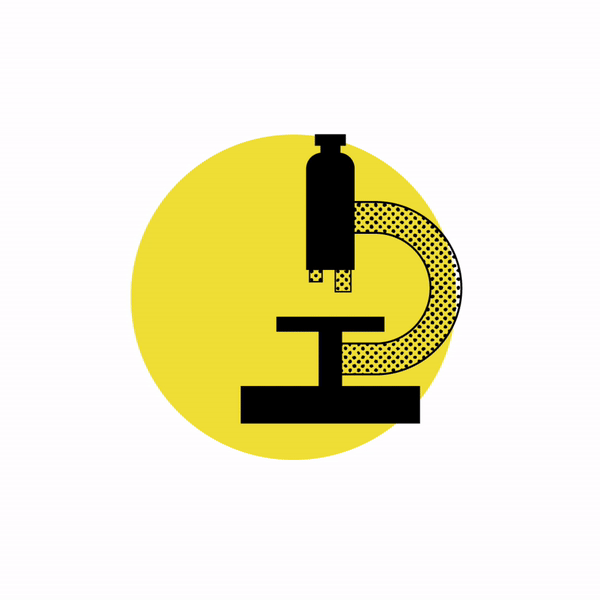
3. How will you know it works?
Not only do you need to know what you need your agency to do, but you also need to understand how to measure the performance of the efforts. That might be timelines, results or other factors (and combinations thereof). Clearly communicating your goals and how those goals are measured is as vital as knowing what you want.
Timeline – Ask your agency how long it takes to complete the types of projects you’ll be requesting and be sure to communicate your absolute due dates early and often.
Results – Marketers who say they can promise specific results—whether it’s click-through rates or actual deposits—are lying. It’s a subjective art. But knowing the targets your campaign needs to hit can help your agency develop a more effective strategy. There are always quantitative indicators of success. While marketing is full of nuance and circumstance, we can certainly see the markers of performance.
Budget – Every agency bills differently and every bank pays differently, but know that every request you make will likely have a dollar amount attached to it. Agree to these term up front and be sure to communicate them frequently.
Many factors that will measure success are kept within the crypts of your bank’s data systems. While Google Analytics and click-throughs can indicate performance, most of us will really be judged by account openings (and those accounts actually being funded), loan growth and share-of-wallet product adoption. You must be a conduit between your bank and the agency to truly track performance.

4. Do you need bank-focused knowledge or localized service?
You likely have two options for agencies: a local agency in your marketplace or a bank-specific agency.
Each has its pros—and cons.
Obviously, bank-focused agencies claim expertise in the same field and bring value from relevant experience, but you might not be able to meet in person as much as you’d like. You must be comfortable using technology to communicate with faraway agencies. Also, be sure to vet their knowledge. I said “claim” on purpose because I’ve seen some bank marketing firms that might know banking or might know marketing, but don’t know both. There are a handful of peers I would recommend at any point and time, but beware bad actors.
Local agencies will provide greater in-person access to a team, but most lack relevant financial industry experience. But don’t count these guys out. I didn’t always know bank marketing, and neither did you. It’s quite possible a non-bank firm will bring new insights. They also have a better understanding of local culture. However, you may find yourself explaining banking principles more than you’d like—saying, “Good idea, but we can’t do that due to Regulation XYZ.” Or you might both miss it. Be sure to have a good compliance backstop if you go local.
Remember that you’ll have to provide what the agency is missing. You might have to relate local culture in one case or explain banking products in another. Only you can decide which route you want to take, but make sure this is a matter that has been discussed and decided upon internally.

5. Do you need one comprehensive solution or a mix of specialists?
Some agencies have a diverse set of services under one roof, and others focus on one area—such as video production or digital advertising.
Do you want to work with an agency that will handle all of your needs, or do you want to be more hands-on, managing individual projects with multiple groups of creatives?
Working with multiple agencies likely means you will have more control over the individual projects. For instance you could find a great fit for general day-to-day needs and add a specialist for a set of animated explainer videos. However, it means you’ll be carrying a much larger workload. You’ll also have to work harder to make sure your brand is consistent from project to project.
Working with an agency that offers all marketing services under one roof means you’ll likely be assigned a project manager to handle some of that workload (if you’re the kind of person who can relinquish it), but also to make sure the designers, photographers, writers and developers are all familiar with your brand standards.
The ability to choose one or many agencies might seem granular, but few consider the amount of choice they have in agency selection.
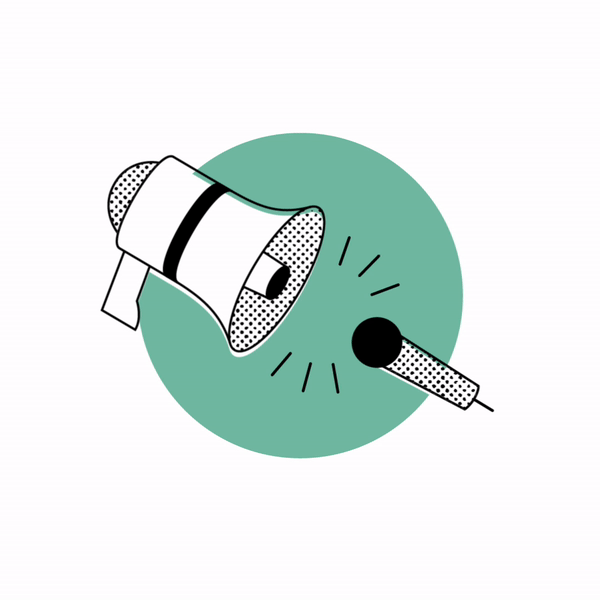
6. Are you willing to overcommunicate?
Some agencies may be able to complete your sentences, but they can’t read your mind.
Communication breakdowns are likely the most pervasive of all agency problems. Per the first question on this list (notice how many of these questions relate to that one item?), you must be the communicator from your bank to the agency. And you must be willing to overcommunicate.
This isn’t an agency owner passing the buck. No agency wants to tell you that they’re dealing with multiple clients, but it’s the truth (unless you want one hell of a bill). At the same time, they’re working in a creative environment, and you’re working in a bank—just because you’re on the same page with an idea doesn’t mean you will both execute it the same.
On top of all of this, your agency will likely have to do some of the most critical work for your bank at the very beginning of the relationship. This means they’re doing incredibly important work before they fully understand the totality of your business. There’s no other way to do it. If you wait until it’s all comfortable, it will always be too late.
If you’re going through the effort of hiring, working with, and paying an agency to work with your bank, make sure you can give them the benefit of the doubt. An agency’s best metric of success is the success of its clients. It’s improbable they will intentionally undermine you.
Maybe you hate your agency’s project management system or aren’t satisfied with the inconsistent response time. There’s a chance they can accommodate change, but if they’re worth their salt, they’ll at least listen to you. Regardless, both of you should work toward a solution. Your feedback is invaluable in that process.
Let your agency know what you like and what you don’t like about the relationship. Open, solution-seeking communication will go a long way toward overall success.
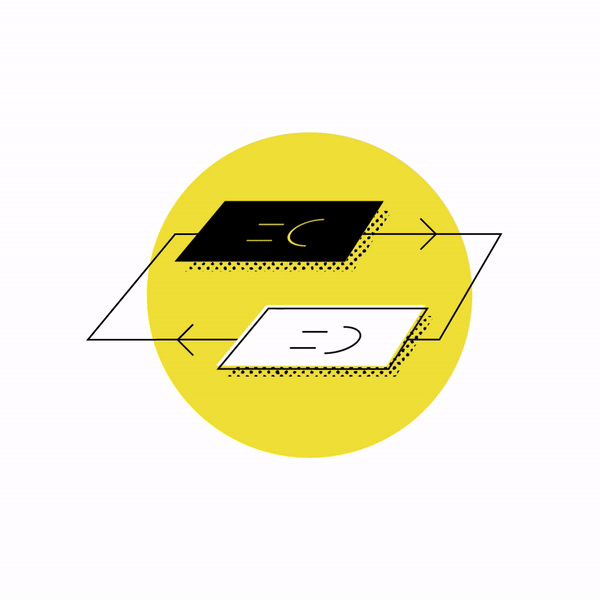
7. Can you facilitate with transparency?
Keep your agency apprised of the goings-on at your bank. If your bank is expanding into a new market or discontinuing a product, your agency needs to know. They’re charged with helping you develop your marketing strategy, and they can’t do that with only a piece of the information. You’ve likely asked them to sign an NDA (and we already established that you shouldn’t work with an agency you can’t trust anyway) so fill them in on what’s coming up. It will only benefit your bank’s marketing in the long run.
Don’t try to protect your agency’s feelings by keeping your frustrations (or praise) to yourself. Any creative adept at working in collaboration can handle criticism. If your CEO hates an ad, you’re not helping anyone by keeping that to yourself. Your agency will just keep making ads your CEO hates unless they know what not to do. This will do nothing for your relationship with executive management and will only cause further damage.
If you’re the type of person who feels stuck between sides that seem to be at odds, I feel for you. I don’t have any simple advice for you. Even if it’s tough, you’ll have to power through or find someone else on your team to deliver the clear feedback to your agency.
The best agencies keep a running document of the things your bank has historically approved, rejected, liked, hated, benefited from, etc. If you say, “Everyone loves it,” when everyone doesn’t, everyone is going to be frustrated when they bring something similar back for the next project. You might not intentionally mislead, but lack of true clarity can be just as damaging in the long run. Keep in mind—good creatives have been put through the wringer on critiques. Just be sure to be the bridge that helps find solutions by making constructive, valid suggestions for changes to work to meet the needs of your institution.
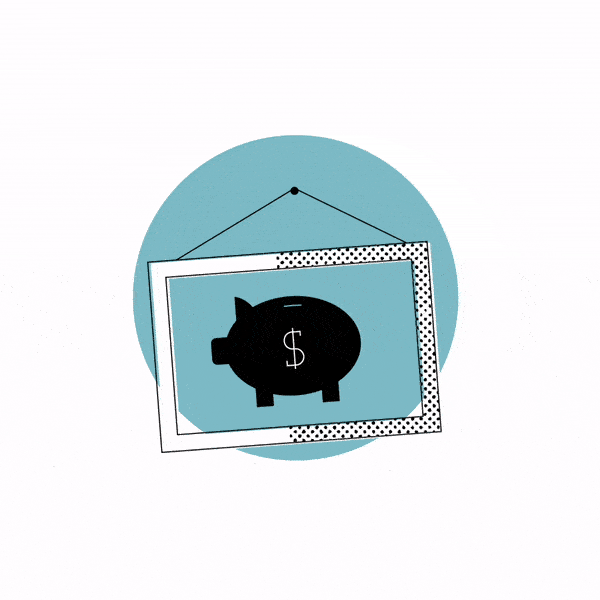
8. Will you share your budget?
Some marketing directors push back when asked to share their budget. It’s understandable, but remember that you have all the power—you’re still the one allocating spending and signing checks. You should be signing off on every project before kickoff, so the agency can’t run rampant with your budget.
If your agency has a full picture of the playing field, it helps them to build a realistic plan. Just because your agency knows your budget, it doesn’t mean they can (or intend to) spend it. You still have to approve projects.
And like I’ve said a few times already, you shouldn’t work with an agency you don’t trust with this level of transparency.
A good agency partner can provide as much value in planning as in execution—if you let them.
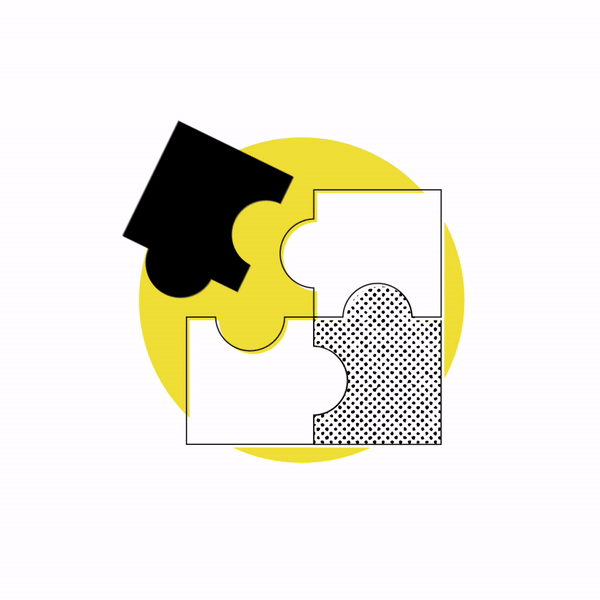
9. Have you considered the politics?
Do you have internal creatives? Writers? Designers? Social media people? Be upfront with your agency about those roles and responsibilities. You will find out quickly if your agency can play well with others. The best agencies will relish the opportunity to arm your in-house creatives (and will appreciate the help in execution).
Make certain everyone is on the same page and has rapport. It’s your relationship to manage. Also, ensure all team members (from your bank and the agency) know each other, understand their own roles, and each other’s responsibilities.
And never leave difficult people in the dark. Too many people avoid involving a negative Nelly. But imagine how negative Nelly will be when she finds out she’s been left out completely. Getting people involved doesn’t mean you have to follow their input to the letter. Listen to difficult people like you would anyone else—get their input and then take the good and leave the bad.
Have as many difficult conversations about roles and responsibilities as you can in the beginning, and the process will run much more smoothly. After all, you don’t want to find out someone you disagree with has been calling your agency without your knowledge and ordering contradictory work. That’s frustrating and expensive.

10. Can you hire an agency that meets similar standards?
In the end, if you can’t hold your agency to similar standards you’re holding your internal stakeholders to, you need to consider finding another agency. There are so many ways that agency/client relationships fail. Any seed of contempt can grow into a wedge if you don’t have clarity, understanding, and open communication. You’re both pushing the same boulder up a mountain, but you’re working together remotely (whether that’s a block away or 1,000 miles across the country). It’s tough work.
On the other hand, finding an agency you can communicate openly, disagree honestly, and collaborate freely with is the stuff of magic. The work you see on our site is built by spending as much time building healthy, elevating relationships as we spend on the creative output. As you look for the best agency for your bank, I hope you find the best fit.
Subscribe to the Bank Marketing Blogcast and never miss an episode.
How much money do you think your household spends on subscriptions each month?
- You or your daughter probably spend $15 on monthly beauty samples from Birchbox.
- You’ve probably spent $10 per meal at Blue Apron for a while (and probably have a few weeks worth of forgotten meals in the freezer).
- You spend $119 each year with Amazon for guaranteed two-day shipping (on most things?).
- Your iCloud, account (which, do you even remember signing up for this?) is $3 monthly.
The average American spends $237.33 each month on subscriptions services (according to a recent Waterstone study)—from streaming video and wellness apps to food delivery and cloud storage.

I think it’s safe to say we are now a subscription based economy.
But for some reason, most banks are under the impression those same clients are unwilling to pay a few extra dollars for the common checking account. Lest you forget, it’s an almost magical product that offers 24/7 access to their money, $250,000 in insurance, and online and mobile banking—and it’s only offered by banks.
Why? We destroyed the value?
How? By giving it away for free.
StrategyCorps offers banks a new way to evaluate and package checking accounts with value-add subscriptions. One of the company’s partners, Dave DeFazio, put it best when he told me, “If we’re talking about not having value, free doesn’t have any value.”
“If we’re talking about not having value, free doesn’t have any value.”
Dave DeFazio
So how do banks offer value?
Banks were asking a similar question after the passage of the National Bank Act in 1933. The act banned banks from offering interest on standard demand deposit (checking) accounts.
This put banks in a precarious position. How could they attract new customers? They did it by giving their clients hip gifts—toasters, wall clocks, and other valuable small appliances. You have a toaster now, but at the time it was a bit of a duplicative extravagance. Everyone wanted one, but didn’t necessarily need it—sort of like an InstaPot today.
When banks couldn’t find a traditional way to show their clients value, they found less conventional means.
In the 70s, banks found ways to (sort of) circumvent the regulations with NOW (negotiable order of withdrawal) accounts, and in the 1980s, small banks began to advertise the gifts as an incentive to open free checking accounts so they could compete with larger banks. They stopped making the gift a part of the checking account’s value, and used it as an up-front lure. By the 1990s, the larger banks joined on the free checking bandwagon and the government even passed the Truth in Savings Act which, among other things, regulated free checking accounts.
Everyone was cutting expenses to compete and the checking account officially lost its value.
In 2011, the passage of Dodd Frank reworked Regulation Q of the National Bank Act, allowing banks to offer interest on checking accounts.
We didn’t have to give away toasters anymore.
But banks did what banks do: chased their tails (the status quo). Instead of evolving the product, we just gave out a new version of the toaster.
We didn’t listen to our customers and instead listened to fulfillment companies who told us to offer free checking with knockoff bluetooth headphones and cheap kitchen appliances.
We need to bring value back to the checking account.
It’s time to make a toaster transition.
I’d be willing to bet your bosses have probably told you (at least twice) to push deposit products in the last quarter.
And conventional thinking (at least in the financial world) is that the easiest way to drive deposits is to attract new checking account clients. And that same thinking says the easiest way to get new checking clients is to give the accounts away. But as we’ve said before, free offers no value.
Well, it’s time to change our conventional thinking. Because the conventional thinking is wrong.
What if I told you the clients who value their checking accounts enough to pay for them value their primary banking relationships more than clients with free accounts? In fact community bank clients with fee checking are three times more likely to have other accounts and products with that same bank (according to a 2018 study from StrategyCorps and Cornerstone Advisors).
Surprised?
The marketplace that once responded to “value pricing” is now more interested in “value added,” but we’re having trouble transitioning from toaster type thinking.
Conversely, 90 percent of community bank clients with a free checking account had no other products with that bank (according to the same 2018 study). Free checking clients don’t value their banking relationship.
So if toasters and wall clocks and knock-off bluetooth headphones are no longer valuable, what is?
The new value paradigm lies in subscription culture. And, I think StrategyCorps’s is providing the best value-add subscription checking product on the market with BaZing
BaZing
Renasant Bank recently partnered with StrategyCorps to create a checking account that features a number of eye-catching value-adds. The account is powered by StrategyCorps’ BaZing product, which bundles benefits—like roadside assistance and cell phone insurance, identity protection, accidental death coverage, a health savings card, and a discount app with more than 400,000 local and nationwide deals —with Renasant’s checking account, all for a subscription fee that ends up being less than most of the benefits would be on their own. Renasant Rewards Extra powered by BaZing was born.
“With BaZing, we find the providers of things that people are already paying for,” Defazio said. “We get good deals because of our buying power and then bundle those products and services and give them to banks for a better-than-market price.”
DeFazio said he is seeing fee-based, benefit-driven checking accounts become more and more popular as the marketplace gets younger.
So maybe you’re thinking, “How do I know what my clients find valuable?” You can start by simply surveying some of your clients. And if that doesn’t work, DeFazio and the team at StrategyCorps have already done a lot of the research for you—whether it means reading their whitepaper or partnering with them to offer a robust benefits account.
Not Convinced?
Free is costing you, and your clients.
Considering everything it takes to operate a checking account, banks spend anywhere from $200 to $500 annually to maintain each account. The problem, DeFazio says, is that, at a typical bank, 30–40 percent of client relationships aren’t profitable.
Not only are these clients costing the bank money, but your bank is also likely costing them. According to the 2018 study, more than a quarter of free checking clients paid ATM fees in the previous year. Nearly as many paid overdraft fees—and the list of fees go on and on, from NSF and debit card replacement charges to overdraft protection and stop payment fees.
Not only are clients who pay for accounts more likely to have more services with their bank, but they’re more likely to refer family and friends. Half of community bank clients who pay for a checking account referred family and friends to their bank, according to the 2018 study. That means your fee-based clients are more profitable, less likely to leave, and more likely to refer your bank to others.
“The buying public are good researchers and know a good bargain when they see one,” DeFazio said. “They also know that free checking comes with fees.”
You get what you give, right? If you give someone a one-time gift—a toaster for instance—you get toast. But, if you give someone ongoing, subscription-based value, you can expect an ongoing, valuable relationship in return.

